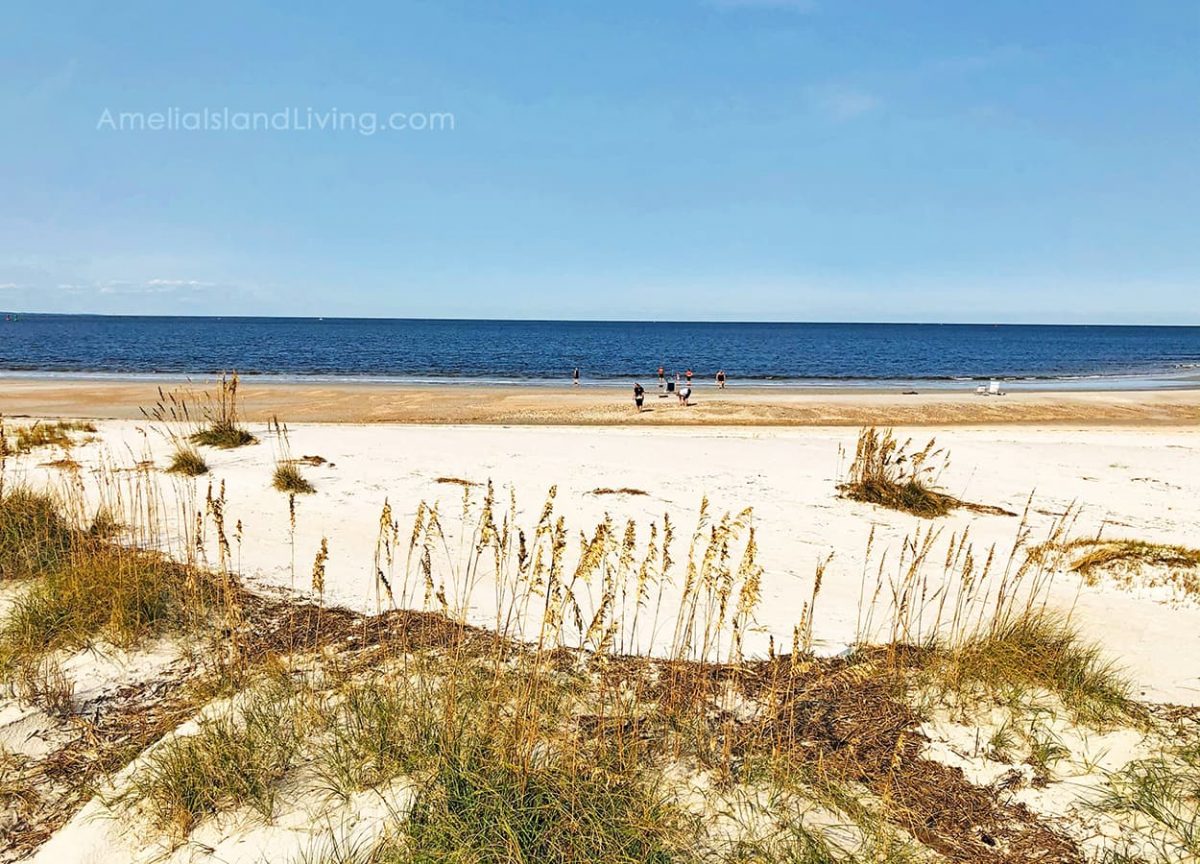Florida’s beaches are widely utilized as recreational areas — one of the main attractions of the state. Yet, the beach is the natural habitat and nesting grounds for various species. Interrupting the natural behavior of wildlife can impact feeding and reproduction and be detrimental to the species’ long-term existence.

Please “share the shore with wildlife.” Follow these tips when visiting the beach (watch Audubon Florida’s video further below):
1. Learn the rules and always respect posted signs. “Most shorebirds and seabirds nest and raise their young between February and August each year in Florida,” according to the Florida Fish and Wildlife Conservation Commission. On Amelia Island, two highly sensitive bird nesting areas are located at Fort Clinch State Park (pictured below), and Amelia Island State Park. These areas are roped off during bird nesting periods. Please keep your distance and respect these boundaries.

Note that much of Amelia Island State Park is designated a “Critical Wildlife Area.” Thus, large areas of Amelia Island State Park are off limits during bird nesting season (“closure dates April 1- September 1st”).
2. Give wildlife some space. You’ve gotten too close if natural behavior is interrupted. Don’t walk into “resting” birds on the beach (sending them flying). Although it’s a childhood impulse to run into a flock of birds and watch them soar, teach children not to disturb birds on the beach. Always keep pets leashed at the beach. Better, yet — don’t bring dogs to the beach, since dogs are seen as predators by wildlife.
Sea turtle nesting season along Amelia Island’s 13-mile long shoreline is May to October each year. Besides respecting shorebirds, if you happen to see a sea turtle on the beach stay far back. Getting too close may cause her to retreat to the sea without laying eggs. Sea turtle nests are clearly marked and should not be disturbed.
3. Show respect to surroundings. Follow the “carry on, carry off” rule when visiting the beach. Please be sure to remove beach shelters, umbrellas, chairs and trash when departing the beach. “Leave only your footprints.”
Watch Audubon Florida’s video tips
For those unfamiliar with the coast, dunes are environmentally sensitive areas and the sea oats within them protected by Florida state law, so please do not enter dunes or disturb sea oats when visiting the beach. Also teach children not to play in the dunes.
If you find a dead, sick, or injured sea turtle (or see anyone disturbing sea turtles or shorebirds), call the Florida Fish & Wildlife Conservation Commission’s 24-hour Wildlife Alert number 1-888-404-FWCC (3922), call #FWC or *FWC on your cell phone, or text [email protected].






